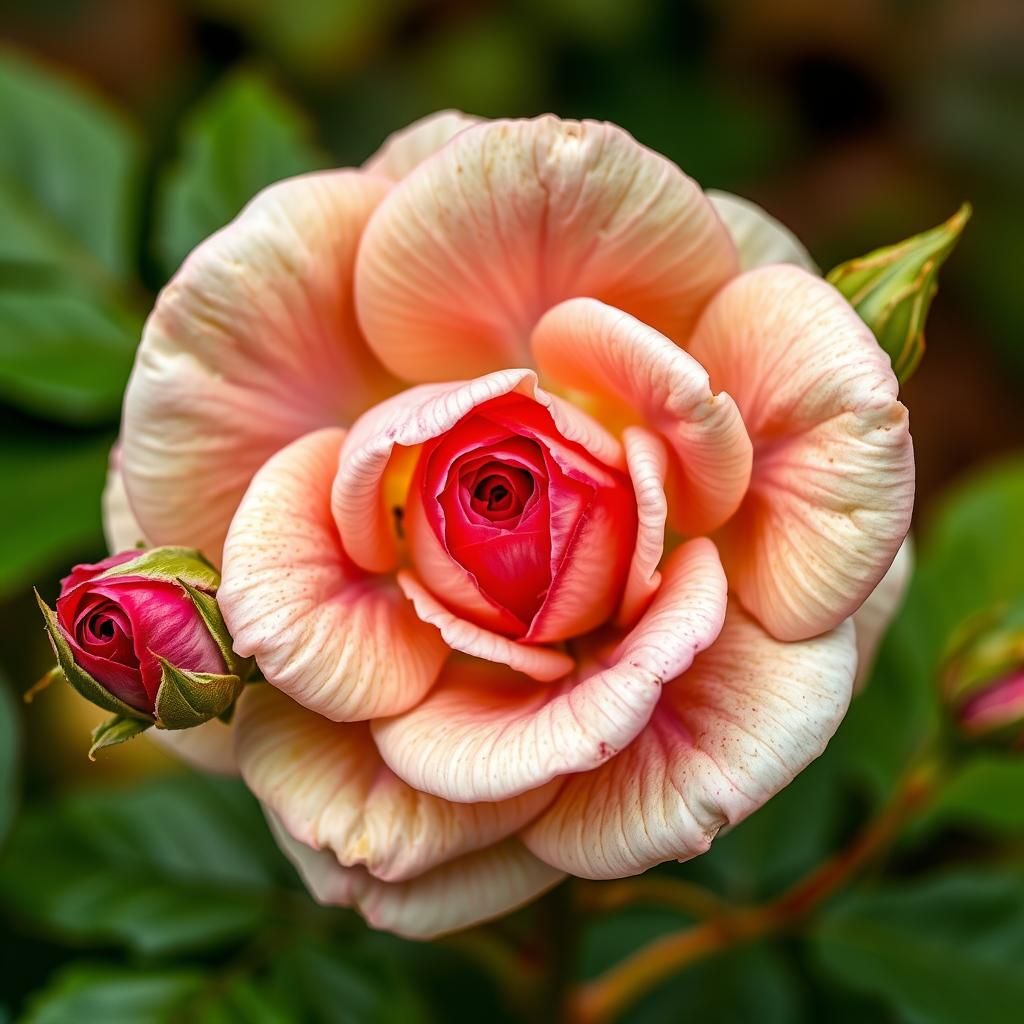Comprehensive Guide to Diseases of Roses in Australia: Identification and Treatment

Roses are beloved for their beauty and fragrance, yet they are susceptible to a variety of diseases that can jeopardize their health and vitality. In Australia, unique climatic conditions and diverse soil types contribute to the prevalence of these issues. This comprehensive guide delves into the most common diseases affecting roses in the region, providing essential information on identification and treatment strategies. Whether you are a seasoned gardener or a novice, understanding these challenges and their solutions will empower you to cultivate vibrant, healthy roses that thrive in Australian gardens. Discover the knowledge needed to protect your floral investments effectively.
Common Diseases Affecting Roses in Australia
Roses in Australia are susceptible to a variety of diseases that can impact their health and aesthetic appeal. Among the most prevalent ailments are powdery mildew, black spot, and rust, which thrive in the country’s diverse climate conditions. These diseases often present symptoms like discoloration of leaves, stunted growth, and premature leaf drop, which can lead to decreased flowering and overall vigor of the plants. Awareness of these diseases and their management is crucial for rose enthusiasts and gardeners in Australia to ensure the longevity and beauty of their rose bushes.
Powdery Mildew
Powdery mildew is a fungal disease characterized by a white, powdery coating on the leaves and stems of rose plants. This disease thrives in warm, dry conditions and can rapidly spread if not controlled. Affected plants often exhibit distorted growth and yellowing leaves, which can hinder photosynthesis and overall health. To manage powdery mildew, it is essential to promote good air circulation around the plants, avoid overhead watering, and apply fungicides if necessary.
Black Spot
Black spot is another common fungal disease that manifests as dark, circular spots on the leaves of roses. This disease can lead to significant leaf drop and affects the plant's ability to photosynthesize, ultimately diminishing its vigor and flowering potential. Conditions such as high humidity and overcrowding can exacerbate the proliferation of black spot. Effective management strategies include removing infected leaves, ensuring proper spacing between plants, and applying preventive fungicides to protect healthy foliage.
Rust
Rust is recognized by the formation of orange or rust-colored pustules on the undersides of leaves, which can result in leaf yellowing and premature drop. This disease is particularly prevalent in warm and humid environments, making it a concern for rose growers in certain Australian regions. Addressing rust involves improving air circulation around the plants, practicing crop rotation, and using resistant varieties of roses when available. Regular removal of affected leaves can also help minimize the spread of the disease.
See also:
Botrytis Blight
Botrytis blight, also known as grey mold, is a fungal disease that affects not only roses but many flowering plants. It primarily causes a grey, fuzzy mold to develop on flowers and leaves, especially under cool, moist conditions. Infected flowers often become mushy and may fail to bloom properly. Controlling botrytis blight involves ensuring that rose plants are not overcrowded and minimizing moisture on the foliage, particularly during evening hours. Additionally, fungicides can be utilized as a preventive measure during damp weather.
Root Rot
Root rot is a serious condition caused by various fungal pathogens that thrive in overly moist soil. Symptoms of root rot include yellowing leaves, wilting, and stunted growth due to damaged root systems. In Australian gardens, this issue often arises from poor drainage or overwatering practices. To combat root rot, it is imperative to plant roses in well-draining soil, avoid excess watering, and consider planting in raised beds if soil drainage is a concern. Early detection and treatment can save affected plants before severe damage occurs.
| Disease | Symptoms | Management Strategies |
|---|---|---|
| Powdery Mildew | White powdery coating on leaves | Ensure air circulation, avoid overhead watering |
| Black Spot | Dark circular spots on leaves | Remove infected leaves, apply fungicides |
| Rust | Orange pustules on underside of leaves | Improve air circulation, plant disease-resistant varieties |
| Botrytis Blight | Grey fuzzy mold on flowers | Avoid overcrowding, minimize moisture on foliage |
| Root Rot | Yellowing leaves, wilting | Plant in well-draining soil, avoid overwatering |
Understanding Rose Disease Symptoms in Australia
Identifying symptoms of rose diseases is crucial for effective treatment and prevention. In Australia, rose gardeners often face issues such as black spot, powdery mildew, and rust, which can severely impact the health and beauty of their plants. Symptoms may vary, but typically include yellowing leaves, black spots on foliage, or the presence of a white powdery substance on leaves and stems. Recognizing these indicators early can help in implementing the appropriate treatment strategies, such as using fungicides, ensuring proper air circulation, or choosing disease-resistant rose varieties.
Black Spot Disease
Black Spot disease is a fungal infection caused by Diplocarpon rosae, leading to dark, round spots on the leaves of roses. This disease thrives in humid conditions and can weaken the plant, causing premature leaf drop and reducing photosynthesis. To combat this disease, gardeners should remove and destroy affected leaves, improve air flow around the plants, and consider applying fungicides specifically designed to target black spot.
Powdery Mildew
Powdery mildew is another common rose disease characterized by a white, powdery coating on leaves and flowers, caused by various species of fungi. It generally appears in warm, dry weather, particularly when plants are overcrowded or under stress. To effectively manage powdery mildew, it is recommended to provide adequate spacing between plants, avoid overhead watering, and apply suitable fungicidal treatments as necessary.
See also:
Rose Rust
Rose rust is caused by the fungal pathogen Phragmidium spp., leading to the development of orange, rust-colored spores on the undersides of leaves. This condition can lead to leaf drop and overall decline in plant vigor. To control rose rust, gardeners should ensure adequate sunlight and air circulation for their plants, regularly remove any affected foliage, and consider applying fungicides that target rust.
Botrytis Blight
Botrytis blight, also known as gray mold, is a fungal disease that primarily affects flowers and buds of roses. The disease thrives in cool, damp conditions and appears as fuzzy, grayish spots on wilting flowers or new buds. Implementing proper pruning techniques to improve air circulation and remove infected parts of the plant is crucial for management. Additionally, using a fungicide to treat the affected areas can help control its spread.
Root Rot
Root rot is a significant problem for rose plants, often resulting from overwatering or poorly drained soil. This condition leads to the deterioration of roots, causing the plant to exhibit symptoms such as wilting, yellowing leaves, and overall decline. Preventing root rot involves ensuring proper drainage in the planting site, implementing good watering practices, and using well-draining soil mixes to maintain healthy root systems.
Questions from Our Readers
What are the common diseases that affect roses in Australia?
Roses in Australia are susceptible to several common diseases including black spot, powdery mildew, and rust. Each of these diseases can cause significant damage to the plants, affecting their overall health and pruning practices. Proper identification and treatment are essential for maintaining healthy rose bushes.
How can I prevent diseases in my rose plants?
Preventing diseases in rose plants involves practicing good cultural care, such as ensuring proper air circulation, avoiding overhead watering, and using disease-resistant varieties. Additionally, regular pruning and maintaining a clean garden environment help to reduce the likelihood of disease outbreaks.
See also:
What are the signs of disease in rose plants?
Signs of disease in rose plants can include discolored leaves, spots, wilting flowers, and overall poor growth. For example, black spot appears as round black lesions on leaves, while powdery mildew presents as a white, powdery coating. Early detection is critical for effective management.
What treatments are available for diseased roses?
Treatments for diseased roses depend on the specific disease but can include fungicides, organic treatments, and cultural practices such as improving drainage and pruning affected parts. Using preventative sprays during the growing season can also help in controlling disease development.

If you want to read more articles like Comprehensive Guide to Diseases of Roses in Australia: Identification and Treatment, we recommend you check out our Shrubs category.
Leave a Reply
Related Articles